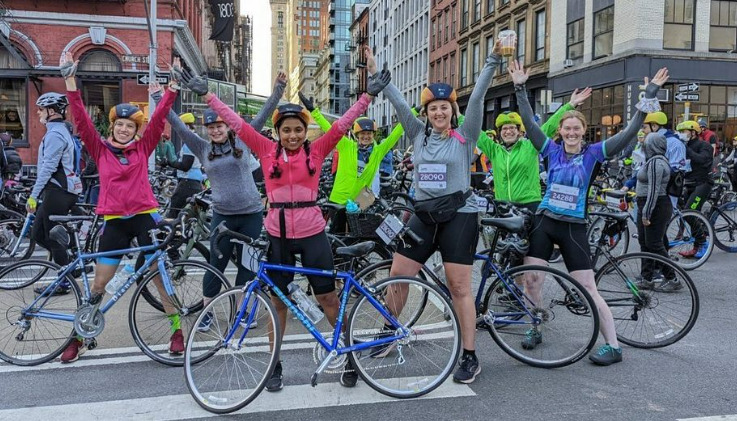By Joanna Giordano
If you have the goal to start bike commuting, start planning now! Let’s say you can ride, but you want to step it up from occasional rider to commuter. This is a great goal! You will ride more, save money, and get the wind in your hair!
Here is a rough guide ramping up to May 19th – National Bike to Work Day.
What to do now:
1. Get your bike ready to go. Got your bike and helmet? Bells, lights? Have you had your bike tuned-up at a local bike shop so you know you can depend on your trusty steed?
2. Map your route ahead of time! Be sure to plan for there AND back since you will probably follow different routes and traffic directions. Don’t forget to assess the mileage, bridges, elevation in case you need to work up to it!
Check out the route turn by turn on the Google map bike option:
- Walk part of it while imagining you are riding
- Bike part or all of it on a weekend. Hop off and walk if you are ever unsure or uncomfortable. Instant pedestrian!
- Notice construction, pinch points, potholes, tough turns
3. Things to look for at your place of work:
- Does your work have a bike room? How will you get there? If it’s in the basement, you may need to use an alternative entrance.
- If you have to lock-up outside, scope out the area to assess security.
- Thinking that you’ll take Citi Bike? Where are the nearest docks to your office? Have a back-up in case your preferred dock is full or empty during your commute time.
- Can you change/shower at work? If not, is there a gym near your office you can use? Or maybe moistened wipes will work for you, or you’re okay with just sweating and glistening?
4. Review your street riding basics:
- Always ride with traffic. Never on the sidewalk. Not with headphones (only 1 ear is legal).
- Stop at lights and before the crosswalk. Not in or on it.
- Review a pedestrian style turn.
April – Time for some dry runs
1. Practice, practice, practice
- Ramp up your distance, if needed. Practice in the park or use your route to train when not commuting.
- Practice dry runs (part/whole) until you feel comfortable with the route and distance
2. A true dry run
- Dry run your entire commute round-trip.
- Leave yourself plenty of time so that there’s no need to rush.
- Note the approximate time taken. It will probably never take longer than that!
May – It’s go time!
Are you ready? How’s the temperature these days? How are those dry runs feeling The day before your first bike commute:
- Plan what you will wear and how you will pack your stuff. Basket, pannier, messenger bag, backpack? Whatever you choose, don’t dangle your purse from your handlebars!
- Check the weather forecast. Many people are all-weather cyclists but no need to be a hero if you don’t want to ride in the rain.
- Will you wear workout clothes and change at work? Don’t forget your bra! It happens to the best of us.
- Will you bike tres chic in your skirt and heels? This is certainly doable, but you may want to practice it a bit first.
- Will you bike home too? You can always split it up and bike in, subway home one day and the next morning: subway in, bike home.
May 19 – Bike to Work Day has finally come!
- Leave early. Bike to work!
- Leave plenty of time since it is an event and the roads may be more crowded with other newly minted bike commuters, like yourself. Give everyone space!
- Maybe you’ll have time to stop if there is a promotional handout – yum!
- Celebrate your accomplishment!
Good luck and we hope to see you in the bike lanes!
Have any other commuting tips or tricks to share? Join in the conversation in our Facebook group!

 Supermodel Ashley Graham’s image recently flooded our newsfeeds as the first plus-sized model to rock the cover of the Sports Illustrated annual swimsuit issue. As a size 14, she’s the same size as the average American woman, but she’s a unicorn in the bikini-clad cover model world. Regardless, winning the coveted spot on the cover sends a message that women with curves can be strong, beautiful, and fit!
Supermodel Ashley Graham’s image recently flooded our newsfeeds as the first plus-sized model to rock the cover of the Sports Illustrated annual swimsuit issue. As a size 14, she’s the same size as the average American woman, but she’s a unicorn in the bikini-clad cover model world. Regardless, winning the coveted spot on the cover sends a message that women with curves can be strong, beautiful, and fit!
